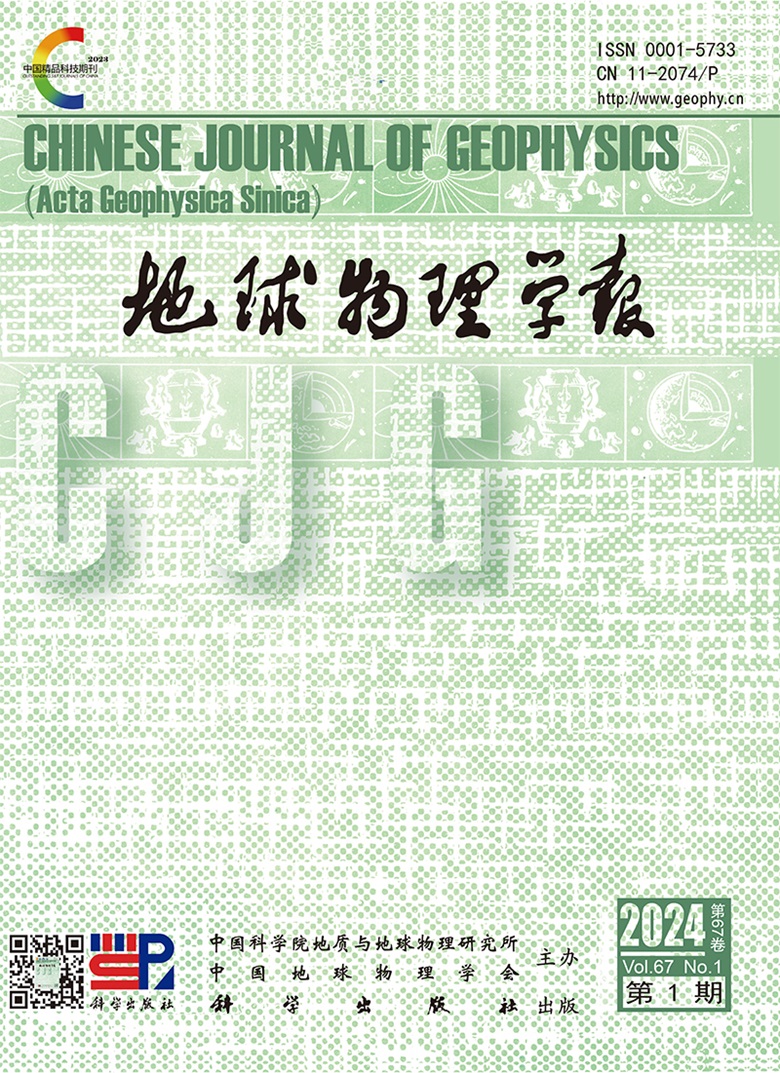2.5D marine CSEM modeling in the frequency-domain based on an improved interpolation scheme at receiver positions
IF 1.4
4区 地球科学
Q3 GEOCHEMISTRY & GEOPHYSICS
引用次数: 0
Abstract
In the marine controlled-source electromagnetic (CSEM) survey, the receivers are usually placed at the seafloor. The resistivity contrast between the seawater and seafloor sediments is large, which can cause difficulties in numerical modeling of CSEM fields at receiver locations. In this paper, we present an improved interpolating method for calculating electric and magnetic fields at the seafloor with a resistivity contrast. This method is applied to the 2. 5 dimensional (2. 5D) frequency-domain CSEM modeling with towed transmitters and receivers located at the seafloor. Considering the discontinuity of the normal electric fields, we use the normal current electric density for interpolation. We simulate the 2. 5D marine CSEM responses by the staggered finite-difference (SFD) method with Fourier transform to the strike direction. The final SFD equations are solved by the direct solver MUMPS (MUltifrontal Massively Parallel Sparse direct Solver). To avoid the source singularities, the secondary-field approach is used and the primary fields excited by the electric dipole source can be calculated quasi-analytically for the one-dimensional (1D) layered background model. We focus on interpolating of electric and magnetic fields in the wavenumber domain to the receiver locations at the seafloor interface between the conductive seawater and resistive seafloor formation. The secondary electric and magnetic fields are used for interpolation instead of the total fields for high numerical accuracy. After performing the inverse Fourier transform to the wavenumbers, the electric and magnetic fields in the space domain are obtained. To check the accuracy of our 2. 5D marine CSEM SFD modeling algorithm with the improved receiver interpolating technique, we compare our results with both the 1D analytical results and the adaptive finite element results. The SFD numerical results are approved to be accurate. We also compare the numerical accuracy between our improved interpolation scheme and others, i.e., the conventional linear interpolation and the rigorous interpolation. The proposed interpolation only utilizes the nodes below/above the seafloor interface, and is proved to be much more accurate than the other two interpolating methods used.基于改进的接收机位置插值方案的2.5维海洋CSEM频域建模
在海洋可控源电磁(CSEM)测量中,接收机通常放置在海底。海水和海底沉积物的电阻率差异较大,这给接收点的CSEM场数值模拟带来了困难。本文提出了一种改进的利用电阻率对比法计算海底电场和磁场的插值方法。该方法适用于2。5维(2)5D)频率域CSEM建模,位于海底的拖曳发射器和接收器。考虑到法向电场的不连续,我们采用法向电流电密度进行插值。我们模拟2。用交错有限差分法(SFD)对走向进行傅里叶变换,得到5D海洋CSEM的响应。最后用直接求解器MUMPS (multifront Massively Parallel Sparse direct solver)求解SFD方程。为了避免源的奇异性,采用二次场方法,对一维分层背景模型进行了电偶极子源激发的一次场的拟解析计算。我们的重点是将波数域的电场和磁场插值到位于导电海水和电阻性海底地层之间的海底界面上的接收器位置。为了提高数值精度,采用二次电场和磁场代替总电场进行插值。对波数进行傅里叶反变换后,得到了空间域中的电场和磁场。来检查我们的2的准确性。采用改进的接收机插值技术对5D海洋CSEM SFD建模算法进行了比较,并与一维解析结果和自适应有限元结果进行了比较。结果表明,SFD数值计算结果是准确的。本文还比较了改进后的插补方案与传统线性插补方案和严格插补方案的数值精度。所提出的插值方法仅利用了海底界面下方/上方的节点,并且被证明比其他两种插值方法要准确得多。
本文章由计算机程序翻译,如有差异,请以英文原文为准。
求助全文
约1分钟内获得全文
求助全文

 求助内容:
求助内容: 应助结果提醒方式:
应助结果提醒方式:


